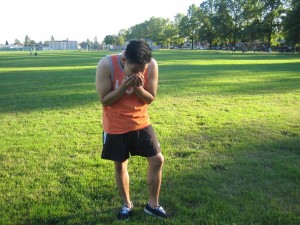Nose bleeds are also known as epistaxis in which the inner part of the nose has plenty of tiny blood vessels and it is one of the most sensitive parts of the body. When these vessels are disturbed, blood will begin flowing coming from the nostril or both the nostrils. Bleeding from the nostril can be light or heavy and last for a few seconds to more than 10 minutes. Sometimes, there is weakness, dizziness, confusion and fainting that goes with nosebleed. Anyone can get nosebleed, but they are quite common in children ages 2-10 years old and adults 50-80 years old.
[youtube url=”https://www.youtube.com/watch?v=m66nuoHtTMU”]Causes
- Dry air which causes drying out of the nasal membranes can result to bleeding.
- Frequently blowing the nose and repeated sneezing
- Exposure to chemical irritants
- Injury caused to the nose
Frequently blowing the nose and repeated sneezing - Allergic reactions
- Excessive heat
- Hard scratching or excessive picking on the nose
- High altitudes
- Excessive consumption of alcohol
- Excessive smoking
- Excessive heat
- Taking large doses of aspirin
- Deficiencies in nutrition
- Hormonal changes during pregnancy
- Conditions such as upper respiratory infections, high blood pressure, blood clotting disorders and cancer.
Treatment
- Allow the affected person sit up straight and lean forward slightly. Avoid lying down or tilting the head in the backward direction. Using the thumb and the index finger, pinch the nose below the bone up against the face and then apply pressure for at least 5 minutes, if there is still bleeding after 5 minutes. Repeat the process if needed and avoid blowing the nose.
- Apply a cold compress on the bleeding nose. Cold temperature constricts the blood vessel faster and slows down the flow of blood. This will stop the bleeding within a few minutes. Wrap a few ice cubes in a face cloth, sit in an upright position and tilt the head backwards. Apply the ice pack across the bridge of the nose for at least 5-10 minutes and repeat the procedure as needed. Avoid applying the ice pack directly on the nose in order to prevent frostbite.
- In ½ cup of water, add a pinch of salt, mix well until completely dissolved. Put a few drops of this mixture into the nose in order to help moisten the inner lining of the nasal passages. Saline solution helps relieve and moisturized the irritated nasal membranes.
- Apply petroleum jelly inside the nose in order to help make the nose moist and also help prevent nosebleed during dry months.
- Install a humidifier inside the house to minimize the episodes.
- Lower the heat inside the room when sleeping. A lower temperature and cool air helps in minimizing the risk of drying out of the nasal passages. Maintain the temperature about 60-64 degrees F when sleeping at night.
- Elevate the head by placing a couple of pillows under the head in order to help prevent nosebleeds.
